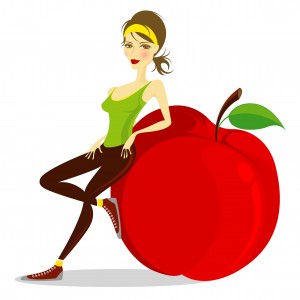 I’m really excited to have had the opportunity to work with New Balance on their variables of victory campaign for the London Marathon 2018. You can find the full article here…
I’m really excited to have had the opportunity to work with New Balance on their variables of victory campaign for the London Marathon 2018. You can find the full article here…
https://www.newbalance.co.uk/london-marathon/the-variables-of-victory/
The food we choose to fuel our running plays a significant role in our performance. The body functions like a well-oiled engine when we choose foods that nourish us and boost our energy levels. Problems occur when we stuff it full of junk, from poor energy levels, to dehydration, increased risk of injury and illness.
My ultimate dietary advice for those training for a marathon, would be to stick to clean and natural foods as much as possible. Proper, real food is freshly picked, gathered, milked, hunted or fished and the further food strays from this basis, the unhealthier and the more confusing it becomes for the body.
The most common dietary mistakes new runners make when training for the marathon are;
- Making major dietary changes in the final week before the event. This can be especially problematic when the level of fibre drastically goes up or down.
- Under eating to lose weight, particularly on carbohydrates and thus compromising recovery from training sessions and lowering immunity.
What to eat before, during and after runs when training;
Before: slow-release carbohydrates which are easy to digest should be the focus of this meal and a little bit of protein and essential fat to keep things balanced i.e. porridge with unsweetened almond milk, blueberries and a sprinkling of ground almonds.
During: around 75 minutes into training many people start to experience a ‘nutritional bonk’ where energy levels dip, others experience it later on and some not at all. If you do experience it and want to give yourself a boost you can make an isotonic drink with 250ml 100% pure apple juice, 250ml water and a pinch of Himalayan crystal salt.
After: fast-acting carbohydrate is needed after training to replenish glycogen levels along with protein to help repair muscle tissue. A plant based, natural protein powder such as brown rice or pea protein combined with unsweetened almond milk, berries and banana would cover this.
Example meal plans
Week 1
This is an important time to make sure you clear out any junk and introduce an abundance of fruit and vegetables. Generally speaking, the brighter the colour, the more nutrients a fruit or vegetable contains. Choose bright red, orange and yellow, deep purple and dark greens.
Avoid anything highly processed, artificial and sugary including; fizzy drinks, syrups in coffee, sweets, biscuits, cakes, crisps, pies, pastries and fast food like burgers, chips, sausages etc.
Breakfast
Option 1: Jumbo oat porridge, organic milk or unsweetened almond milk and strawberries
Strawberries are a rich source of vitamin C which boosts immunity and they also contain plenty of fibre. They are lower in sugar than other fruits so keep blood sugar more even.
Option 2: Smoothie with banana, mango, unsweetened almond milk and almonds
Combining different types of fruits increases the amount of vitamins and minerals we can get into one meal. Tropical fruits like these are higher in natural sugar so ideal post workout.
Option 3: Rye sourdough toast with almond butter and blueberries
Blueberries are a potent source of vitamins, minerals and antioxidants. Antioxidants mop up damage caused by free radicals released during training.
Lunch
Option 1: Chicken salad with quinoa, avocado, baby spinach, watercress and rocket
Ensuring you get plenty of leafy green vegetables into your diet and particularly, the darker greens, boosts levels of vitamin A and C. They also help purify and cleanse the blood.
Option 2: Puy lentils with sweet potato, cherry tomatoes, beetroot and rocket
Sweet potatoes contain abundant amounts of beta-carotene, which gives it the bright orange colour. Our bodies convert it to vitamin A. It helps make our skin glow and boosts immunity.
Option 3: Tiger prawns with lemon, avocado, beetroot, watercress and wholemeal pitta
Beetroot like many other fruits and vegetables, contains an excellent source of potassium, a mineral essential for healthy nerve and muscle function.
Dinner
Option 1: Steak with Mediterranean vegetables i.e. peppers, onions, tomatoes, aubergine
Combining different types of vegetables in one meal increases the profile of vitamins and minerals and cooking items like tomatoes, enables our bodies to better absorb the nutrients.
Option 2: Poached salmon with tender stem broccoli and kale
Broccoli, kale and other cruciferous vegetables are an important part of our diet, they have cancer-fighting properties and mop up excess oestrogen in the body.
Option 3: Organic stir fried tofu with sweetcorn, broccoli and mushrooms
Mushrooms contain a rich source of zinc and together with vitamin C, this little combination boosts immunity and keeps us running day after day without getting ill.
Snacks/workout fuel
Option 1: Hummus and carrots
Carrots are another high beta-carotene food which converts to vitamin A in the body and helps protect our eyesight hence the saying “carrots make you see in the dark”.
Option 2: Almond butter, apple and oatcakes
Apples are a rich source of antioxidants, phytonutrients and fibre. They are also high in vitamin C thus boosting immunity hence, “an apple a day keeps the doctor away”.
Option 3: Pumpkin seeds and goji berries
One of nature’s top super foods, goji berries contain abundant amounts of vitamin A, vitamin C, iron, zinc, antioxidants and fibre and make a handy, portable snack.
Drinks
Option 1: Water
It’s paramount that you drink plenty of water before, during and after training. Relying on other types of drinks such as tea or coffee to hydrate you, can cause headaches and poor energy levels.
Option 2: Herbal and green tea
These are better choices as they are either caffeine-free or low caffeine and often contain lots of antioxidants which mop up damage in your body caused during training.
Option 3: Homemade isotonic drink: 250ml apple juice, 250ml water, pinch of Himalayan salt
This can be used for training sessions over 75 minutes in duration. The Himalayan salt is a key part of this combination as it’s crystalline structure ensures the fluid is absorbed into cells more easily.
Check out the link on the New Balance website for more information on week’s 2, 3 and 4 or get in touch for a tailor made plan suited to your individual requirements.


